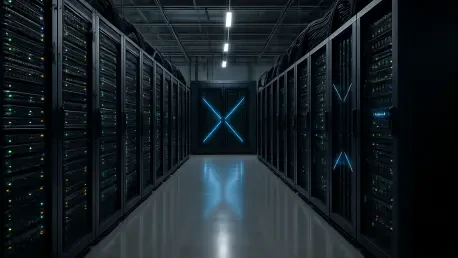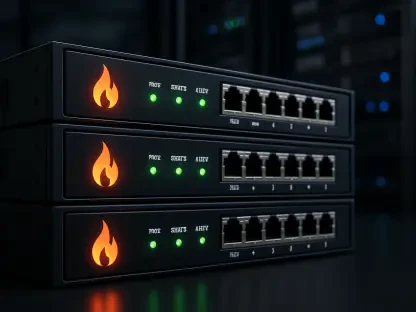In a world where artificial intelligence drives innovation at breakneck speed, a single device has ignited a frenzy among tech giants and businesses alike, vanishing from shelves mere hours after its release on October 15. Nvidia’s latest marvel, a compact AI supercomputer, has left countless buyers scrambling for a chance to own this desktop powerhouse, capable of processing immense datasets in a frame no larger than a small box. This has become the most coveted tool for industries hungry to harness AI’s potential. What could spark such demand, and why can’t supply keep up with the clamor?
The significance of this scarcity extends far beyond a single product launch. As AI reshapes sectors like healthcare, finance, and manufacturing, the race for cutting-edge hardware has exposed deep cracks in global supply chains. Nvidia’s struggle to meet demand for this groundbreaking device mirrors a broader challenge in the tech industry, where production bottlenecks collide with an insatiable appetite for tools that can fuel digital transformation. This story uncovers the forces behind the hype, the technology’s promise, and the hurdles facing those desperate to secure a unit.
Why Nvidia’s DGX Spark Has Everyone Buzzing
The tech community has been abuzz since Nvidia unveiled its latest innovation, a desktop AI supercomputer that redefines compact power. Known as the DGX Spark, this device sold out within hours of hitting the market, with Nvidia’s online store flashing “out of stock” before many could even click “buy.” Retailers reported unprecedented interest, with lines forming at select locations for a chance to snag one of the limited units available.
What fuels this fervor? The DGX Spark promises to bring enterprise-grade AI computing to smaller businesses and specialized teams, packing performance that rivals massive data center rigs into a portable design. Its appeal lies in bridging a critical gap—offering high-end capabilities without the prohibitive costs or space demands of traditional supercomputers, making it a game-changer for industries racing to adopt AI solutions.
This hype, however, comes with a stark reality: most potential buyers have been left empty-handed. Major retailers struggle to restock, and the device’s scarcity has only amplified its mystique. Discussions on tech forums and social media reflect a mix of awe at its potential and frustration over its unavailability, painting a picture of a product that has captured imaginations but remains just out of reach.
AI Hardware Demand Amid a Supply-Starved Landscape
Zooming out, the DGX Spark’s shortage is a symptom of a much larger issue plaguing the tech world. AI has become the backbone of modern industry, with companies across sectors investing heavily in tools to process complex algorithms and massive datasets. A recent report from Gartner indicates that global spending on AI hardware is projected to grow by 30% annually from 2025 to 2027, underscoring the relentless demand for devices like Nvidia’s latest offering.
This surge, however, collides with persistent supply chain disruptions. Semiconductor shortages, exacerbated by geopolitical tensions and manufacturing delays, have strained production capacities worldwide. Nvidia, despite its dominance in the GPU market, faces the same bottlenecks that have slowed the rollout of everything from consumer electronics to industrial equipment, leaving even well-funded enterprises waiting for critical hardware.
The stakes are high as businesses pivot toward AI-driven strategies. From predictive analytics in healthcare to algorithmic trading in finance, the need for robust computing power has never been more urgent. Yet, with supply lagging far behind, companies must grapple with delays that could hinder innovation, revealing a tech landscape stretched thin by its own ambitions.
Inside the DGX Spark: Specs, Delays, and Market Challenges
Diving into the specifics, the DGX Spark’s journey to market was anything but smooth. Initially revealed as Project DIGITS at a major tech expo in January, its launch was delayed by five months from an anticipated May release to October 15. Nvidia cited unspecified production challenges for the setback, a delay that only heightened anticipation among eager buyers, only for stock to vanish almost instantly upon release.
Technologically, the device is a marvel, boasting the Nvidia GB10 Grace Blackwell chip, 128GB of unified system memory, and a staggering 1 petaflop of performance at FP4 precision—all in a 6-inch square frame weighing just 2.65 pounds. Compared to Nvidia’s 2016 DGX-1, which delivered 170 teraflops at a cost of $129,000 and consumed 3,200W of power, the DGX Spark’s efficiency is a leap forward, priced at just under $4,000, though up from a $3,000 pre-order figure. Its compact design and 240W power draw make it a standout for space-constrained environments.
Market dynamics, however, reveal a narrow audience. With a price tag nearly double that of a high-end gaming PC, the device targets industrial buyers over individual consumers. Retailer policies, such as Micro Center’s one-per-household limit, suggest an effort to curb bulk purchases by corporations seeking multiple units for data centers, highlighting a tension between accessibility and concentrated demand.
Industry Reactions and Buyer Struggles
Feedback from the field paints a vivid picture of the DGX Spark’s chaotic rollout. At Micro Center’s 29 participating US locations, stock varied wildly—some stores boasted over 25 units, while others, like the Indianapolis branch, had just nine. Staff at several outlets described scenes of eager buyers arriving at opening hours, only to learn that units were already claimed due to high pre-launch interest, with no reservations or advance payments allowed.
Industry insiders and analysts have taken note of the corporate tilt in demand. Partnerships with tech giants like Dell Technologies and HP signal Nvidia’s intent to expand the device’s ecosystem, potentially easing scarcity through broader distribution in the future. A spokesperson from a major retailer hinted at the trend, noting that inquiries often came from business representatives rather than individual enthusiasts, aligning with the product’s niche positioning.
Buyer frustration, meanwhile, is palpable. Social media posts lament the instant sell-out on Nvidia’s online store, with many criticizing the lack of transparency on restock timelines. One tech consultant, speaking anonymously, expressed disappointment after failing to secure a unit for a client’s AI project, underscoring how the shortage disrupts real-world applications and forces businesses to seek alternatives or delay plans.
Strategies to Navigate the Supply Crunch
For businesses and enthusiasts determined to acquire a DGX Spark or comparable AI hardware, patience and strategy are essential. Monitoring retailer updates is a critical first step, as outlets like Micro Center may announce limited restocks for in-store pickup. Subscribing to Nvidia’s notifications or checking partner websites for availability can also provide an edge in a market where timing is everything.
Exploring alternatives offers another path forward. Nvidia’s collaborations with companies like Acer and Lenovo mean similar systems based on the DGX Spark’s design may soon hit the market, potentially with better stock levels. For enterprises, assessing whether a full suite of units is necessary or if scaled-back solutions can meet immediate needs is a prudent approach, balancing ambition with practicality.
Flexibility remains key in this constrained environment. Businesses should prioritize long-term planning, perhaps delaying non-critical projects until supply stabilizes, while individual buyers might consider waiting for broader rollouts through Nvidia’s partners. Staying informed and adaptable will be crucial for anyone navigating this competitive landscape, ensuring they are positioned to act when opportunities arise.
Reflecting on a Launch Marked by Scarcity
Looking back, the rollout of Nvidia’s compact AI supercomputer unfolded as a tale of innovation overshadowed by scarcity. The device, with its unparalleled specs and promise to transform enterprise computing, captivated industries, yet left many unable to secure a unit due to instant sell-outs and limited stock at retailers. Its steep price and corporate focus carved out a specific market, even as supply constraints tested the patience of eager buyers.
The challenges of production delays and global bottlenecks played a central role in shaping this narrative, reflecting a tech ecosystem strained by its own rapid growth. Partnerships with major manufacturers hinted at a wider reach down the line, but immediate access remained elusive for most. The intense demand underscored AI’s critical role in modern business, even as it exposed the fragility of current supply chains.
Moving forward, businesses were encouraged to adopt strategic patience, monitoring restock updates and exploring alternative systems from Nvidia’s allies. For those who missed out, the lesson was clear: adaptability would be vital in securing the tools needed to stay competitive. As the dust settled, the focus shifted to anticipating how Nvidia and its partners might address these shortages, paving the way for broader access to AI’s transformative power in the months ahead.









